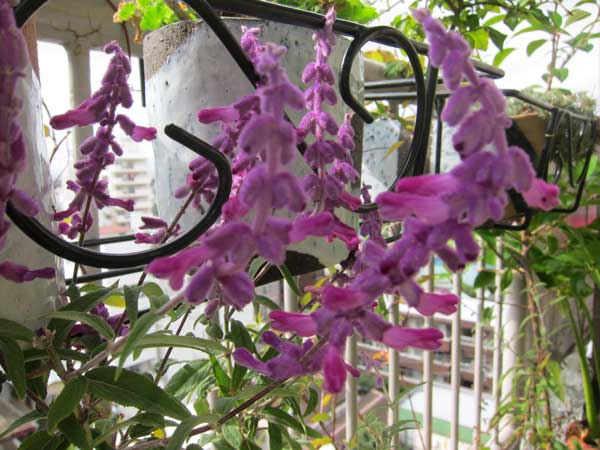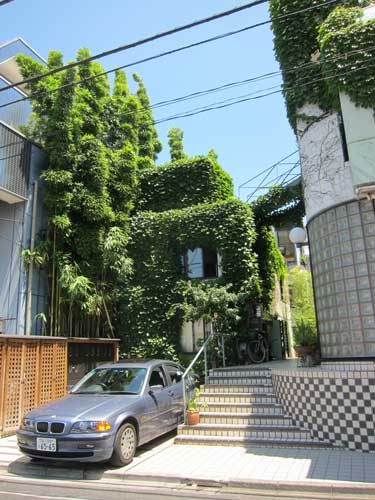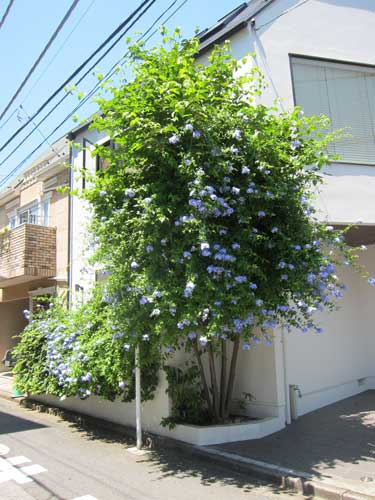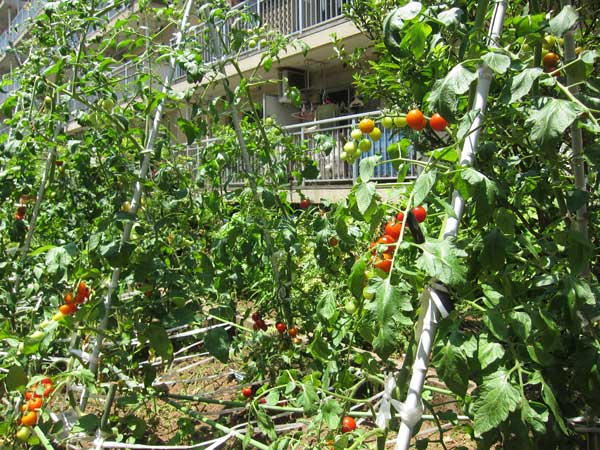
I like how this very common and hardy camellia brings some life to a concrete patio in a Nakano back street. I wonder who placed it there and keeps it well pruned.
I can easily imagine a jungle growing between these older commercial buildings, a living food alley with scent and maybe a small creek bed. As it is now, this space between buildings functions as a giant chute for capturing rainwater, which then travels many kilometers and must be processed, alongside sewage, before being released into Tokyo Bay.
At least someone working or living there is decorating and enjoying the space.











